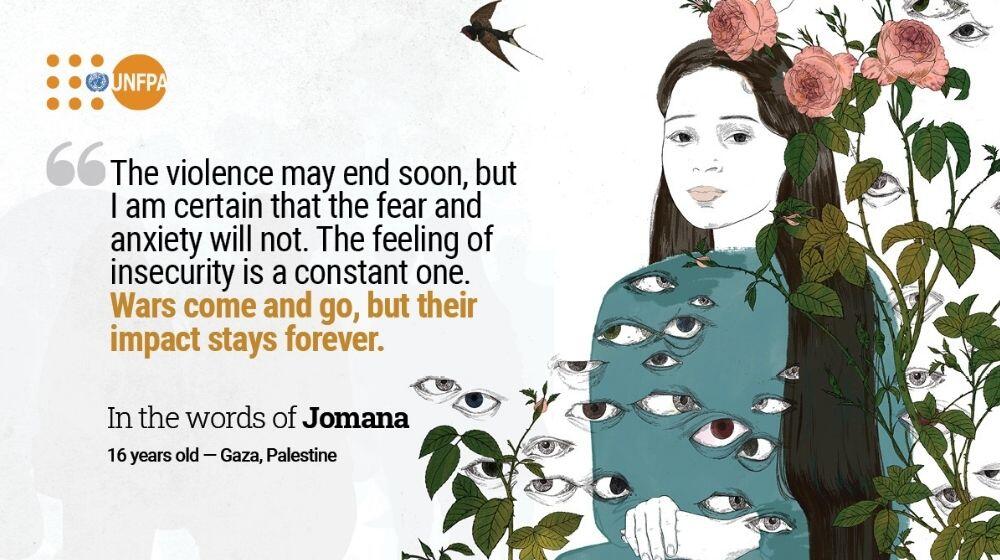“I’ve been dancing since my early childhood and I will continue to dance when I’m an old woman,” writes 13-year-old Rima from Palmyra, Syria. “One day, I hope to dance all over the world and to meet famous dancers who can teach me their moves.”
Rima is one of nearly 40 adolescent girls whose writing, insights, and artistic creations are featured in ‘In Her Words’ — a special initiative organized by UNFPA Arab States Regional Office for adolescent girls living in humanitarian settings throughout the region.
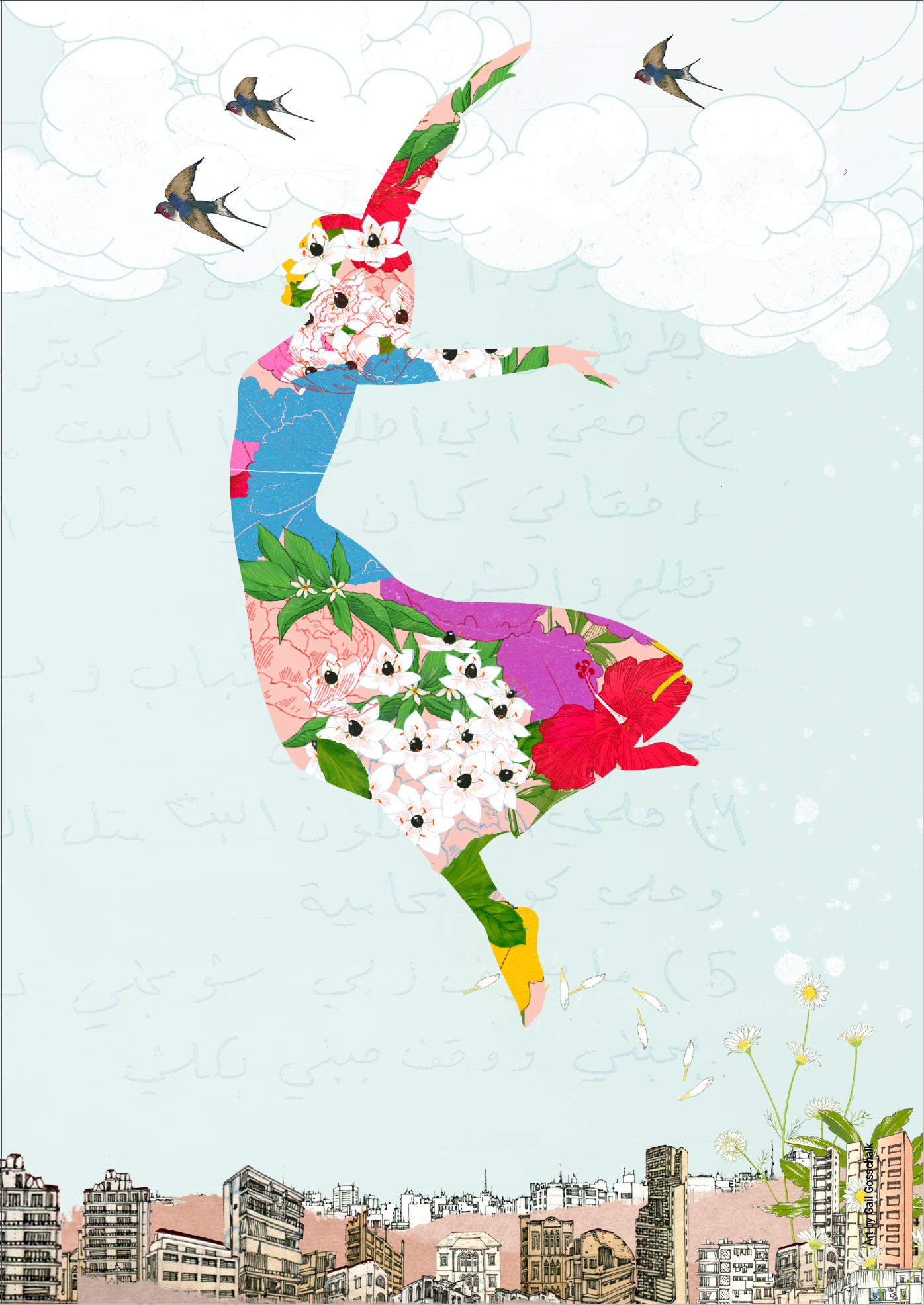
Developed by the UNFPA Regional Humanitarian Hub for Syria and the Arab States (RHHSAS), the initiative invited adolescent girls living in Lebanon, Jordan, Iraq, Palestine, and Syria to experiment with different forms of self-expression, resulting in a remarkable array of impactful moving narratives.
In 2021, several countries in the Arab region are coping with the lasting impacts of emerging humanitarian situations. Both the Syria and Yemen crises have passed the ten-year mark, while more recent developments in Sudan and Lebanon will result in additional disruptions in community networks, placing the lives and dignities of millions of people at risk. Meanwhile, the worsening impact of the COVID-19 pandemic has only exacerbated the challenges facing communities in those countries, impeding access to lifesaving services and exacerbating the risks of gender-based violence.
Through ‘In Her Words’, we are given a unique and direct look into the lives of adolescent girls living in the humanitarian settings in the Arab region, many of whom have spent their formative years amidst conflict, displacement, and violence. And yet, as their stories and artworks illustrate, adolescent girls have a seemingly unending capacity for perseverance, healing, and transformation, in many instances choosing to face their realities with a resiliently positive outlook towards a better future.
Her Dreams
The first chapter of ‘In Her Words’ — Her Dreams — immediately communicates the remarkable spirit, awareness, and imagination of adolescent girls even as they face the most challenging of crises.
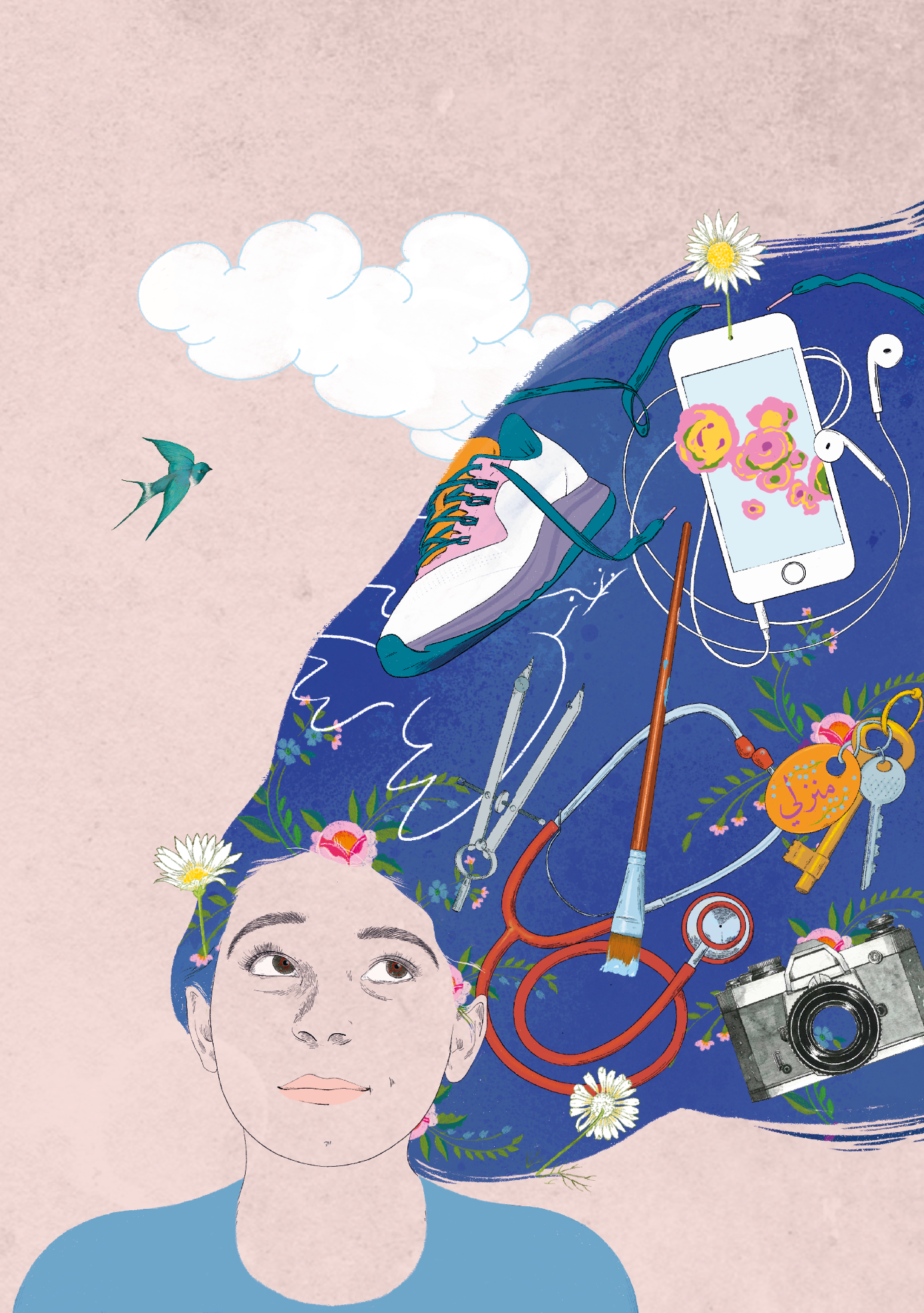
“I want to be a journalist because my and many other stories need to be heard,” explains Nalin, a 16-year-old Syrian refugee in Qushtappa Camp, located in the Kurdistan Region of Iraq. “I want to document everything: the violence against women and children and the courage of the people who work hard for the future of the Syrian people.”
Friendships and mutual understanding feature as dominant themes in their narratives, often associated with a sense of appreciation and steadfast loyalty. More importantly, adolescent girls in crisis settings continually demonstrate their awareness of the challenges impacting them, with many choosing to become part of the solution.
“When you see so much suffering around you, it not only changes you but, if you are lucky, you also get to play a part in the solution,” explains Maya from Amman, Jordan. “This is why I decided to volunteer and help other girls who have seen worse fates than me.”
This passion for activism and transformation is also echoed by Ahed who, as a talented rapper and poet, has continually leveraged her art to fight for the rights of women and girls. “I encourage every girl to stand for her right to express herself in any form she desires. Our voices and our message of gender equality need to reach people to understand what we go through.”
Her Realities
“When I turned 14, I learned that dreams are called dreams because they’re not real,” writes Sham from Idleb, Syria, now 17. Her story, featured in the second chapter — Her Realities — deals with a wide range of difficult themes that also pervade the stories of her peers, further illustrating the dichotomous realities of adolescent girls in the region.
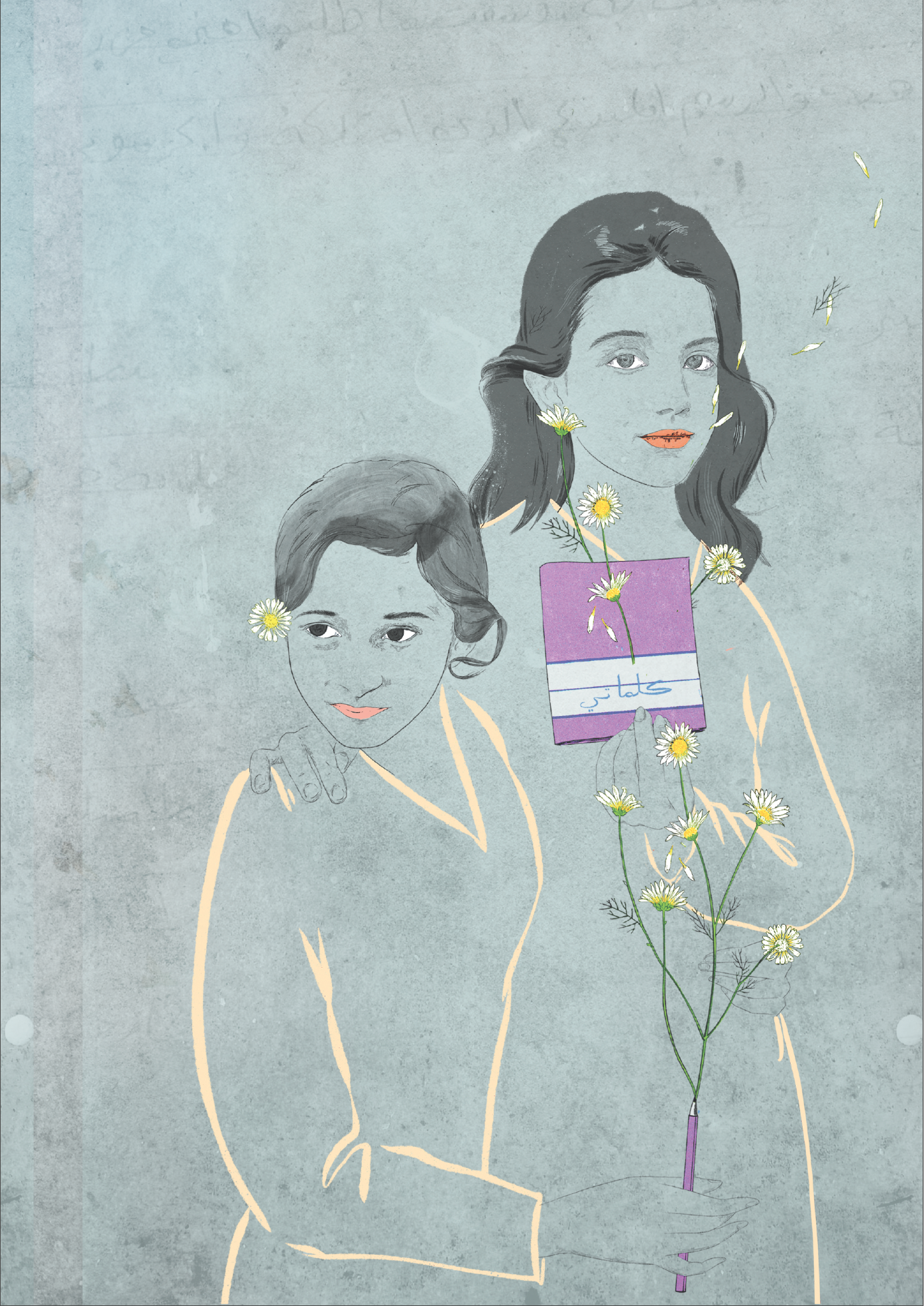
“To be a girl in my community is to feel like a lifelong refugee; restricted, ashamed and constantly feels threatened,” writes 18-year-old Hala from Syria, who notes that while humanitarian crises definitely made things worse for girls like her, the “restrictions that rule their lives today have always been there, regardless of what was happening around them.”
Adolescent girls in humanitarian settings are often trapped in a web violence that manifests in early adolescence and continues to follow them for the remainder of their lives. Harassment, family violence, forced and early marriage, sexual violence, and denial of education and resources are among the many forms of gender-based violence they face, and the risks increase in crisis settings.
As Hala stated, these forms of violence exist but often worsen when protection networks are disrupted during humanitarian crises. Hala herself was taken out of school at age 14 and forced to marry a man twice her age, who in turn abandoned her less than a year after claiming that she was infertile. She has since remarried, this time to an even older man, and has given birth to a boy.
“I love him with all my heart,” she writes of her child. “He is my world, because he is just as helpless as I am, but he is also my invisible chain.”
For 17-year-old Serena from Beirut, Lebanon, the prospects for a better future became even more grim after the Beirut Port Blast in August 2020, “When you are consistently in a surrounding that works against you, that limits every aspect of your life. It becomes quite impossible to continue working towards a goal,” she explains. “Still, we do it, because the young people of Lebanon want to be part of the solution and simply need a place to start.”
Her Triumphs
Despite the multitude of challenges besetting them, adolescent girls continue to rise above these realities to create their own, demonstrating the true meaning of resilience. Many of the survivors whose accounts have been included in this publication have moved on to become artists, exceptional students, activists, and change-makers in their communities — a clear testament to the depth of their capacity for healing and transformation.
“A deaf girl has to double the effort to be noticed,” explains 19-year-old Amal from Damascus who, like many girls living with disabilities, has had to face discrimination her entire life. And yet, Amal says that her disability became a source of strength, inspiring her to achieve self-reliance and independence.
“I made the decision to become the best hair stylist in the city,” writes Amal. “I fully intend to continue and to completely break free from the restrictions that have been imposed on me long before I was born. With the support of other women and girls around me, I have hope.”
Girls like Amal continue to defy seemingly impossible odds as they strive to find their place in the midst of crisis. In their stories, art, and interviews, they continue to show that they are capable of transcending — and even transforming — the harmful norms and practices that inhibit their development, choosing instead to find strength in adversity.
“More and more girls are realising that being treated this way by anyone is simply unacceptable.” writes Janeh, a refugee living in the Kurdistan Region of Iraq, who herself survived sexual harassment and attempted assault. “Every girl has the right to live in dignity and free from harm.”
Girls also tell us that the impact of humanitarian programmes that are designed specifically for them cannot be understated, particularly when it comes to providing them with exclusive safe spaces where they can heal, socialise, and access the services and guidance they need.
“After being introduced to Ms. Layla, it became much easier for me to find hope in life again,” writes Mirav, 19, who joined Janeh in a number of activities hosted at the UNFPA-supported Safe Space in Qushtapa camp. “She helped me simply by being there; by showing me all that I can be and listening to my fears and hopes without making me feel guilt or shame.”
Meanwhile, adolescent girls who are fortunate to find the support they need are often able to carve their own paths to a brighter future. For Kafa from Aleppo, who had always wanted to start her own apparel company but instead became a mother at the age of 15. After accessing training and counselling services at a Safe Space in her community, she quickly formulated a vision for her future and went straight to work. Today, she runs one of the most popular shops in the whole of Aleppo, which also provides training and livelihood opportunities for gender-based violence survivors in the area. As she puts it, “This is only the beginning.”
A Message from Mariam
Concluding the chapters of In Her Words is a message from Mariam — UNFPA’s digital ambassador for adolescent girls in the Arab region. Mariam voiced her first message back in 2020, calling for a brighter future for girls like her who wish to reach their full potential as agents of change in their communities. Echoing the voices of many girls interviewed by UNFPA, Mariam reaffirms what humanitarians already know about adolescent girls: that they want to and are able to achieve greatness and self-actualisation, even in the worst of circumstances.
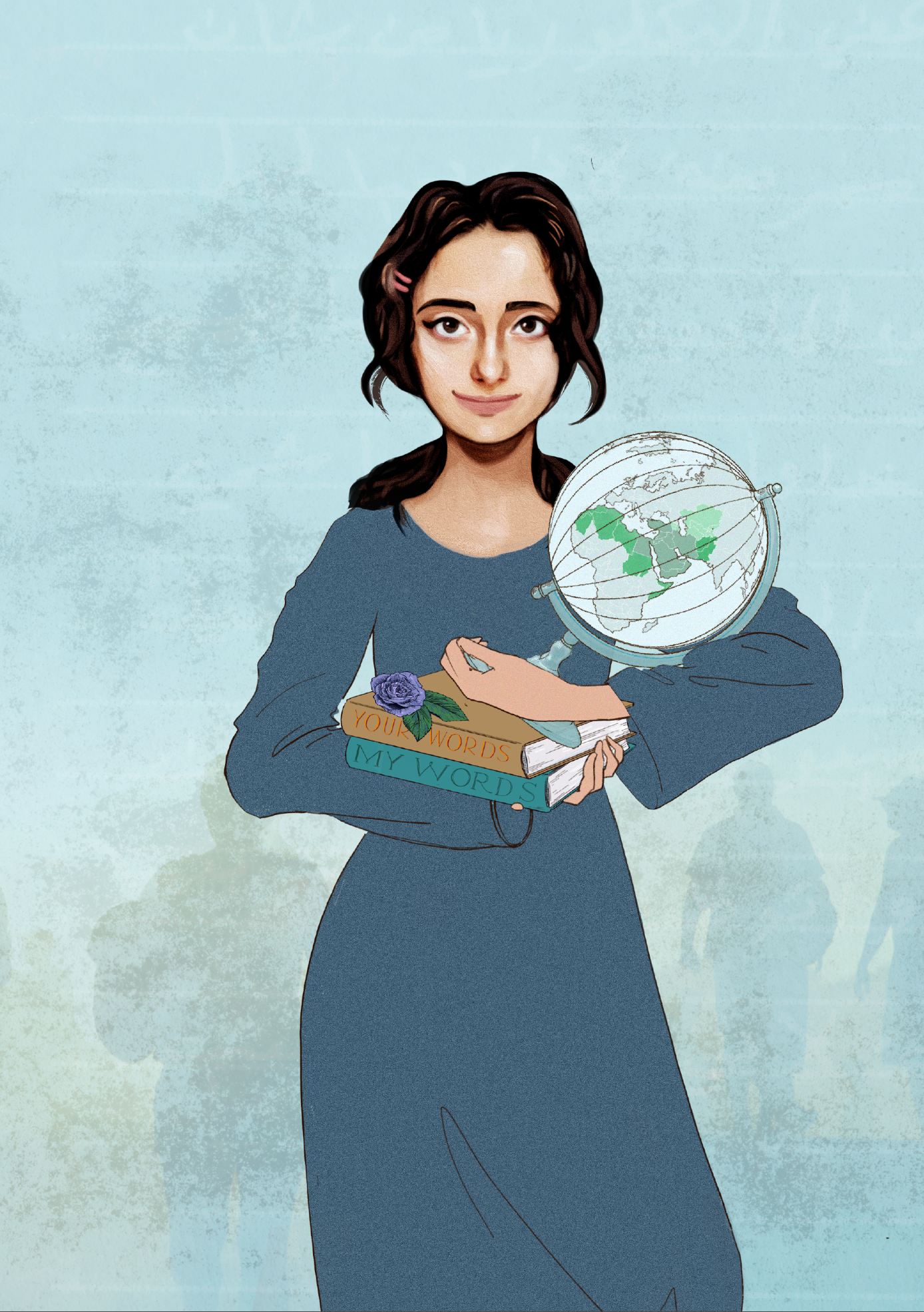
“If the stories of girls like me tell us anything, it is that we are all fighting for the same right: to be viewed as equals, to have opportunities to choose the lives we want to lead and whom we want to marry and when,” she writes. “All we ask is for those who have the power — including humanitarians — to listen to us, treat us as equal partners, and give us programmes that are based on what we need.”
Mariam also concludes with a message from Lana, an 18-year-old survivor of sexual violence from Aleppo, Syria: “Adolescent girls are not as helpless as people think. We are strong, and we can help create a better world if given the chance.”

